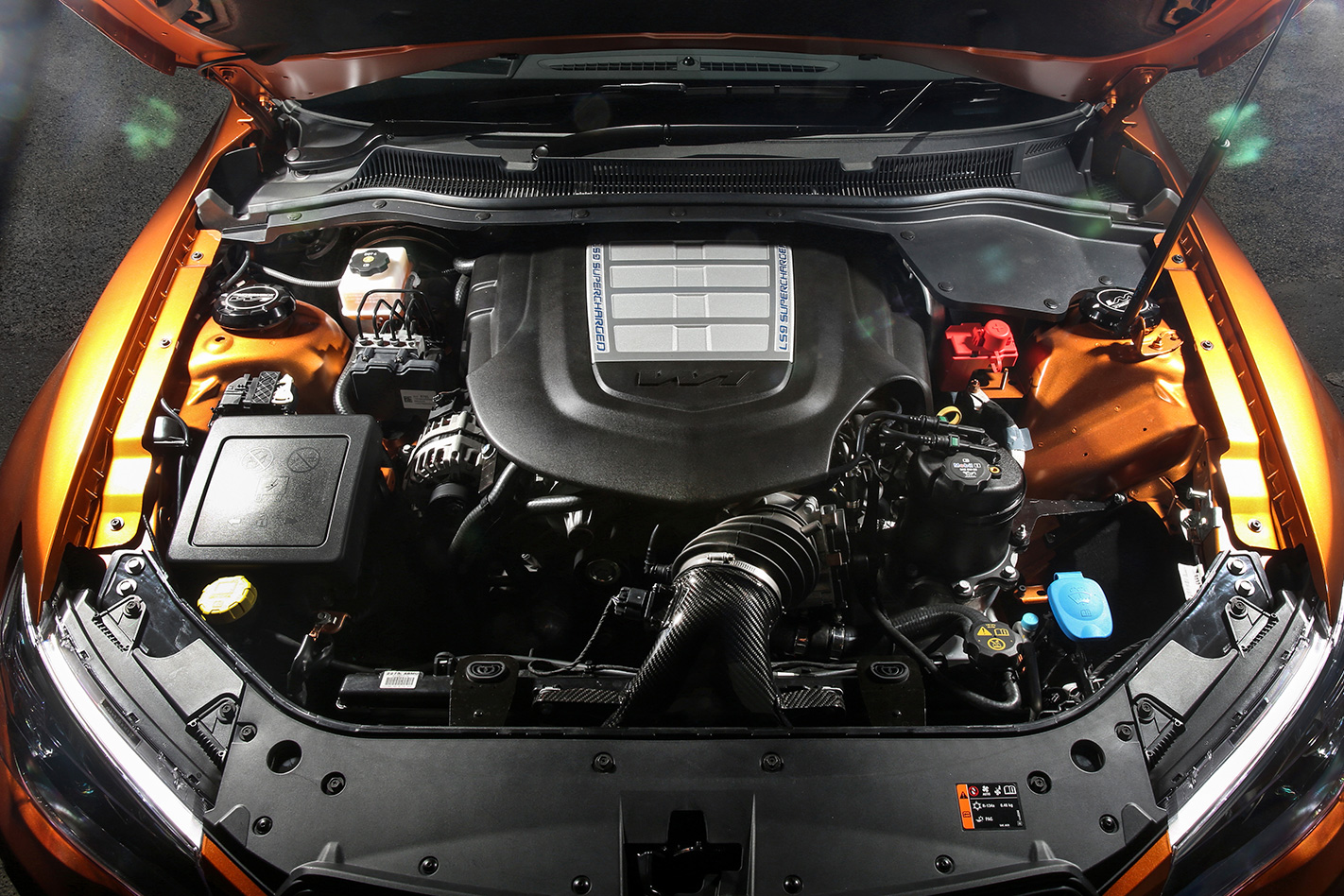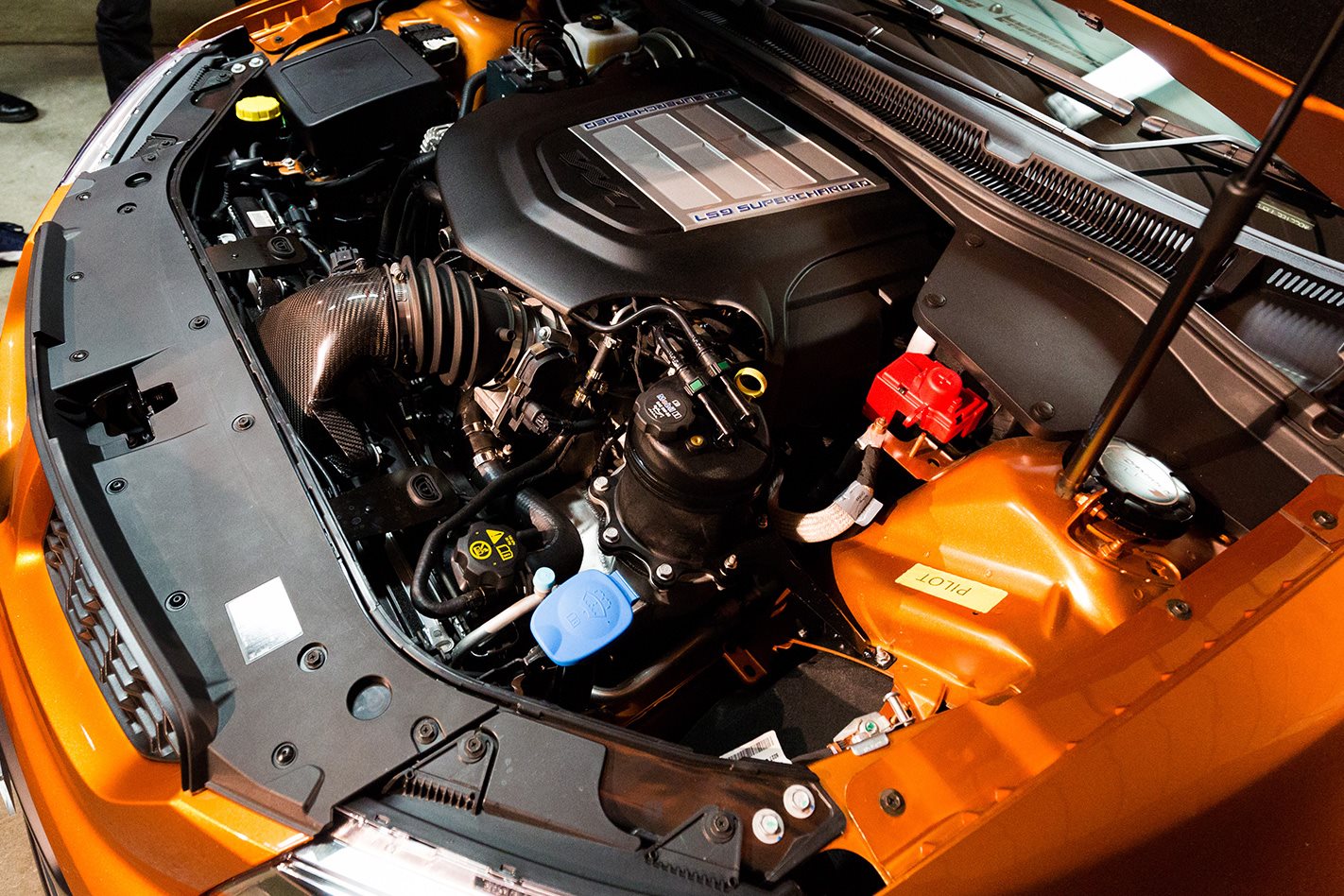Oil starvation sucks. Poor pick-up is bad news for critical engine components, such as bearings, which desperately need lots of the black gold to reduce friction and dissipate heat to avoid going kaput.
It’s why a dry-sump engine has for decades been employed by some of world’s fastest, nimblest vehicles – ranging from a World War II Spitfire to Formula 1 cars, supercars … and HSV’s new W1 muscle car.
The W1 follows the HSV W427 in borrowing such an advanced lubrication system from Chevrolet’s fastest Corvette – ZR1 this time, after Z06 – to aid dynamic driving.

To avoid this, dry sumps employ a separate oil tank and multiple pumps in a multi-stage lubrication process.
The deeper tank’s ability to store greater quantities of oil is also handy for high-performance cars. It helps the oil perform better for longer – essential when oil degrades more quickly the under higher an engine revloads.
Benefits don’t stop there. A shallower oil pan – not completely dry, of course – allows lower displacement positioning of the engine for improved centre of gravity, while it’s possible for some extra power to be liberated by lowered crankcase pressure, thanks to the combination of the lower oil level and scavenger pumps helping to remove air.

That includes the original 911, though its sump was more of a wet/dry hybrid – especially compared to today’s GT3 variant, which features no less than seven scavenger pumps to aggressively feed oil back to its separate reservoir. (The W1 features just one.)
Mercedes-AMG’s GT also employs a dry sump, linking it to the 300SL Gullwing – fortunately without being quite as problematic. The huge oil capacity of Benz’s 1950s race-car-turned-road-car was so effective at cooling the engine that you had to drive it like you stole it to ensure proper combustion and unfouled spark plugs.
There are several reasons dry sumps aren’t ubiquitous in the industry. The additional components and plumbing adds complexity, increases the weight of the engine, and costs a few hundred dollars more than a wet system.






